Audiolab MDAC+ – Exceptional Build Quality and Sound.
MSRP: $1599 Canadian.
Review series ‘In the House’ by David Neice
Verdict
The Audiolab MDAC+ is built as solidly as any military-specification gear and offers a top notch sound field that will not disappoint potential buyers. This DAC will handle virtually all PCM and DSD files, thus making playback of hi-res file downloads an easy affair. An array of flexible inputs and outputs and onboard sound shaping filters and other menu options allow the happy owner to customize the sound field in a myriad of ways that all increase user flexibility enormously. Well done, Audiolab!
A long time ‘audio correspondent’ comes knocking
The other day I got an email from one of my long time ‘audio correspondents’. He asked if I had a recommendation for an external DAC as he was looking for a model for his bedroom system. The timing of his inquiry was propitious. I had just received that very day a heavy but sturdy double box within, which was an Audiolab M-DAC+. It falls into one of the mid-priced brackets for DACs and therefore exceeds the needs of my correspondent. The MSRP stated by the distributor is $1599 Canadian, which is still a fair chunk of change.
So, what do you get?
Briefly: it is a lovely piece of kit. This thing is built like a tank and offers all expected inputs and outputs – including balanced outputs. For output it also includes a headphone amp. The MDAC+ can act as a pre-amp with complete volume control (and even electronic balance), and remote control – so if a buyer doesn’t use analog sources then the DAC can be connected straight into a power amplifier.
I must say I am mightily impressed with the solid build quality. This is no plastic component. The fit and finish of the case, connectors and controls is exemplarary. Owners can be proud of their purchase based solely on the quality of the build. While I did not pop the lid, I assume that the interior design and layout are equally excellent.
An extensive digital menu system is found on-board, with many combinations of sound shaping filters and other settings. This is a premium product and I suspect this kind of functionality is pretty much expected now in high-end digital gear. If you burrow down through the on-board menus there is much to like, and the flexibility of these various filters can help ‘unlock’ the DAC’s potential within your system.
The array of inputs and outputs should satisfy all comers. As mentioned, the M-DAC+ can handle all manner of PCM and DSD formats. I mainly streamed CD bits to the Audiolab via digital coaxial cable, in addition to employing Spotify streamed via a Dell Latitude through a USB 2 connection, as well as some hard drive streaming of FLAC and MP3 files.
Me and DACs
I am behind the curve on DACs these days, which is why I asked for the Audiolab unit to review. I have a Cambridge DACMagic that is really long in the tooth, but practically speaking I use it only in a secondary system. I have gotten wedded to DACs and CD players with Wolfson chips over the years, but a lot has changed and ESS Sabre chips (found in this Audiolab) seem to be increasingly used, with the excellent Burr-Brown chips not being as visible as ten years ago but popping up now and then such as in the highly regarded Bluesound Node 2i streamer.
Breaking it in
The morning after I received it and read the manual I had the Audiolab MDAC+ up and running with its output sent through a secondary system that I use in my sunroom, my winter haven. I settled in for a few hours of subdued listening. With the factory default settings it all seemed quite promising. Leading edges and decays were clean and clear. Initially I was listening to some old Rod Stewart cuts (such as Maggie May) and there was lots of convincing mid-range clarity. Certainly, I thought to myself, it is much better than the Cambridge DAC that I have had on hand for it seems like far too long. And frankly, for the money, it should be.
I ran it using my Audio-Technica headphones for quite a while, and began to tinker with the on-board sound shaping filters. I quickly came to the conclusion that the filter setting labeled ‘Optimal Spectrum’ (see footnote 1), which in a very subtle way examines the transients and highs for near perfect frequency response, was by far the best filter setting for me and my musical tastes. I used this filter setting almost exclusively throughout the remainder of my listening experiences, even when running the DAC through my main system.
After adjusting the filter settings to suit my preferences I spent a very pleasant extended weekend listening to it in my sun room. I had by then put about 20 hours or so of break-in time on the MDAC+, so I then shifted it over to the main system.
The main system and its ancillaries
A word or two about my main system, at least the digital part. The CD transport is a Cambridge Audio 640C with coaxial output being used in this application via a six foot digital (75 Ohm) cable. My usual device interconnects are DIY using bulk Kimber PBJ wire. The amplifier is a Unison Research ‘Simply Italy’ Class A tube design.
The speakers used are a rotation of standmount J.M. Reynaud Bliss Jubilees and DALI Oberon 5 floorstanders. The speaker wire is also a DIY product made up of braided fine gauge Ohno Continuous Cast (OCC) copper wire. This system may not meet everyone’s fussy satisfaction but it surely works for me, and has evolved over decades. Patching in the MDAC+ to my main system was a revelation. I was quite used to the sound of the dual Wolfson chips on board the Cambridge Audio CD player, but the MDAC+ immediately opened up a fresh window on the sound emanating from the speakers.
The MDAC+ features
Before we review the resulting soundscape, let’s look at the feature set again. The front panel includes a lovely large display that’s easily read from across the room, and sports two large knobs, one for the menu settings and another for the volume control. There is a standard headphone jack and a standby light that indicates when the master power switch on the back is engaged. The power supply is an internal linear affair, there are no switching supplies or wall warts found here.
The rear panel is festooned with inputs and outputs. There is an incredibly complete list of connection possibilities and it is hard for me to imagine any situation that would require more connections in a domestic setting, even for a home studio.
The remote is quite compact and usefully engages the front panel display so as to highlight the menu options that lie buried in the unit. This DAC will play all PCM files up to 32-bit 384 kHz, and will handle DSD files up to DSD 256.
However, it does not unfold MQA, or handle WiFi (or Ethernet), or Bluetooth files. These require a different category of DAC component, and readers who want direct streaming capability should probably look at Audiolab’s newer 6000N Play unit, which can accommodate all of that.
The overall soundscape and reactions
Through the main system I was struck immediately by the width, depth and precision of the sound field. The MDAC+ offers a large and superbly-layered image, as well as a highly resolving presentation. This is a simple summary, but again, please be aware these reactions were formed when using the filter setting labeled ‘Optimum Spectrum’ which dominated my listening sessions. The MDAC+ is very well suited to people who above all listen to vocals or else to people who focus on vocals even when the music is quite complex. The resolution and image specificity for vocalists is tremendous. This DAC is so resolving that you will think you can hear the frogs in their vocal chords.
Specific CD titles and tracks
Excited by the sound stage, I proceeded to line up an array of CD titles and tracks to check my initial reactions. I then spent a pleasant two weeks listening almost every evening to this large stack of CDs. Some were old chestnuts, the sort of test discs that all audiophiles have in their collections. Others were new finds and for the purposes of ‘uncovering’ some interesting music in this review I will focus on just one old chestnut and two new finds, or at least new to me.
Old chestnuts
 I do like some electronic music and in particular the French duo ‘Air’. Their debut album ‘Moon Safari’ and their follow up work ‘Pocket Symphony’ were used here to plum the resolving power of the MADC+. These albums contain tons of subtle musical cues that are added in the studio; ear candy essentially. In addition, relying on electronic instruments and studio conditions, the musicians create a true soundscape from the lowest organ notes to the highest sheen of bells, and each element of the music is precisely located in layered space. The MDAC+ did a phenomenal job of unpacking these complex soundscapes. The details were glorious and the layering and precision of the image was breathtaking. I have never heard these CD albums more faithfully resolved and I just fell quite still during their reproduction in order to revel in the complex details being unmasked. Truly outstanding.
I do like some electronic music and in particular the French duo ‘Air’. Their debut album ‘Moon Safari’ and their follow up work ‘Pocket Symphony’ were used here to plum the resolving power of the MADC+. These albums contain tons of subtle musical cues that are added in the studio; ear candy essentially. In addition, relying on electronic instruments and studio conditions, the musicians create a true soundscape from the lowest organ notes to the highest sheen of bells, and each element of the music is precisely located in layered space. The MDAC+ did a phenomenal job of unpacking these complex soundscapes. The details were glorious and the layering and precision of the image was breathtaking. I have never heard these CD albums more faithfully resolved and I just fell quite still during their reproduction in order to revel in the complex details being unmasked. Truly outstanding.
Heads up for Jenn Grant
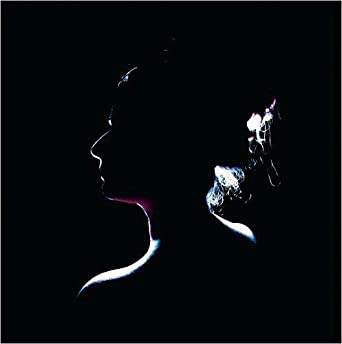 Speaking of uncovering good things – I’m a Jenn Grant fan. She is a charming chanteuse from PEI and now Nova Scotia, who I think is above average. I have most of her catalogue but recently I scored the title ‘Paradise’, which I can unhesitatingly recommend to anyone, and particularly audiophiles. It is superbly recorded and while some tracks have a lot of studio added reverberation, they are largely anthemic tunes and so the reverb adds drama. Through the Audiolab DAC I found that, once again, the tremendous detail added to the album, though the studio recording was openly revealed. The various reverberant fields were highlighted with such accuracy that one could identify actual changes in the reverb envelopes when shifting from track to track. Grant’s glorious voice and frequent falsetto swoops are the highlight of this disc. One is easily mesmerized by this DACs ability to render closeness and precision in her voice. As I have said above, this is truly a DAC for vocal lovers.
Speaking of uncovering good things – I’m a Jenn Grant fan. She is a charming chanteuse from PEI and now Nova Scotia, who I think is above average. I have most of her catalogue but recently I scored the title ‘Paradise’, which I can unhesitatingly recommend to anyone, and particularly audiophiles. It is superbly recorded and while some tracks have a lot of studio added reverberation, they are largely anthemic tunes and so the reverb adds drama. Through the Audiolab DAC I found that, once again, the tremendous detail added to the album, though the studio recording was openly revealed. The various reverberant fields were highlighted with such accuracy that one could identify actual changes in the reverb envelopes when shifting from track to track. Grant’s glorious voice and frequent falsetto swoops are the highlight of this disc. One is easily mesmerized by this DACs ability to render closeness and precision in her voice. As I have said above, this is truly a DAC for vocal lovers.
Rose Cousins
 Rose Cousins is another great Canadian find. Rose is also originally from PEI, but now lives and records in Halifax. Both she and Jenn Grant are central players in the thriving East Coast Music Association, and ECMA is a towering font of major talent which all Canadians should embrace. Cousins has two recent CD releases, ‘Natural Conclusion’ and ‘Bravado’. Both are highly recommended with superb production values and true audiophile sound. Through the Audiolab DAC I listened to ‘Natural Conclusion’ over and over, mostly to allow the songs to stick in my mind, but also because the ability of the MDAC+ to focus the mind with laser precision on the vocalist just swept me up. Sometimes I do this with a CD; I will just repeat an album or a track over and over until I fully absorb its beauty. Thankfully the CD format (as well as digital streams) permit this as there is no wear and tear, unlike vinyl albums which need some rest before replay. Rose Cousins has a purity of voice that is almost unequaled and she has the songwriting chops of a Canadian Carole King. She is a huge talent and the Audiolab MDAC+ faithfully highlights her abilities. It was a real treat for me to experience this DAC as it melded with her talents and fully revealed her outstanding musical compositions.
Rose Cousins is another great Canadian find. Rose is also originally from PEI, but now lives and records in Halifax. Both she and Jenn Grant are central players in the thriving East Coast Music Association, and ECMA is a towering font of major talent which all Canadians should embrace. Cousins has two recent CD releases, ‘Natural Conclusion’ and ‘Bravado’. Both are highly recommended with superb production values and true audiophile sound. Through the Audiolab DAC I listened to ‘Natural Conclusion’ over and over, mostly to allow the songs to stick in my mind, but also because the ability of the MDAC+ to focus the mind with laser precision on the vocalist just swept me up. Sometimes I do this with a CD; I will just repeat an album or a track over and over until I fully absorb its beauty. Thankfully the CD format (as well as digital streams) permit this as there is no wear and tear, unlike vinyl albums which need some rest before replay. Rose Cousins has a purity of voice that is almost unequaled and she has the songwriting chops of a Canadian Carole King. She is a huge talent and the Audiolab MDAC+ faithfully highlights her abilities. It was a real treat for me to experience this DAC as it melded with her talents and fully revealed her outstanding musical compositions.
Got Soul? Check out David’s Classic Soul #1 Spotify Playlist
https://open.spotify.com/playlist/1DkXnVwBMfgF4ouz4SR2ns?si=AsxVVh0WRkCvwZHCBxoDsA
Streaming Spotify from Laptop
Spotify files are lossy files, Ogg Vorbis 320Kbs I believe. The biggest sonic change was a small collapse in the width of the sound field. I had a modified Dynaco PAS3X preamp for many years, and it had a tone control function that allowed you to narrow the left and right channel separation and image width, as measured in decibels. I often ran the PAS3X in a slightly blended position of -6 db as I found the image to be more natural. I found the Spotify files offer up a similar perspective. This is ‘not’ and I stress not the fault of the DAC. The DAC is just resolving what is available to it from the internet stream, but it does point to some of the limitations we live with when we stream lossy bits via WiFi these days (see footnote 2).
FLAC files and MP3
Turning now to lossless FLAC files: I ran a few direct comparisons between some original CD tracks and ripped FLAC files taken off the same CD and written to my hard drive. Were there any audible differences? The short answer is no, or at least I could not detect any differences through the MDAC+. This is as it should be as these are lossless tracks.
I converted some of these same tracks to MP3 files and I was delighted to find that the lossy MP3 files were sonically a very close approximation to the full lossless files. I then listened to a host of MP3 files and thought – this should be good enough to please anyone! With the MP3 files (streaming from a hard drive) I did not detect any loss in channel separation or image collapse in the apparent width of the sound field, such as I heard with tracks streamed from Spotify.
Other DACs to consider?
No audio component does everything, and some may look at the MDAC+ as a legacy product. Those looking for internet streaming capability can check out Audiolab’s 6000N Play ($799 CAD), which has been collecting positive reviews. The previously mentioned Bluesound Node 2i is another popular choice.
For a pure streaming DAC in the MDAC+ price range, Lindemann’s Limetree Network streamer was favourably reviewed by Tim Smith here in Wall Of Sound, earlier this year.
Conclusion
On balance, the Audiolab MDAC+ offers owners a lot of sound value. Build quality is beyond reproach, and the emerging sound field is splendid, Flexible options for inputs and outputs are endless. The ability to resolve DSD streams makes the availability of hi-res audiophile downloads a real possibility. Finally, the menu driven internal filters offer the user extensive flexibility to tailor sound to their immediate circumstance or preference, a fantastic benefit. Kudos must therefore go out to Audiolab for designing and manufacturing this fine piece of equipment.
Brief Specifications
DAC: ESS Sabre32 9018
Sampling Rates: PCM – Up to 32 bit 384 Khz, DSD – up to 11.2 M for DSD 256
THD: <.002% weighted
Frequency Response: +/- 0.2 db (20 -20kHz)
S/N ratio: >120dB weighted
Dynamic Range: >120 dB weighted
Net weight: 3.7 kg
Web: https://www.audiolab.co.uk/mdac-plus/
Acknowledgement
The review sample was graciously loaned to us by the Canadian distributor, Erikson Consumer.
Footnotes
(1) From Audiolab’s manual: “The ‘Optimum Spectrum’ filter implements optimum sampling theory and is designed for near perfect technical response in the frequency domain.”
(2) This was double checked using various tracks where I have some assurance that my audible memories are quite good. The narrowing of image width when using Spotify is a subtle effect probably not even noticeable to most listeners. When using even quite revealing headphones it is not prominent, and only displays itself when using a room system. (Editor’s Note: some “massaging” may also be needed to get the best USB audio performance from a Windows PC)

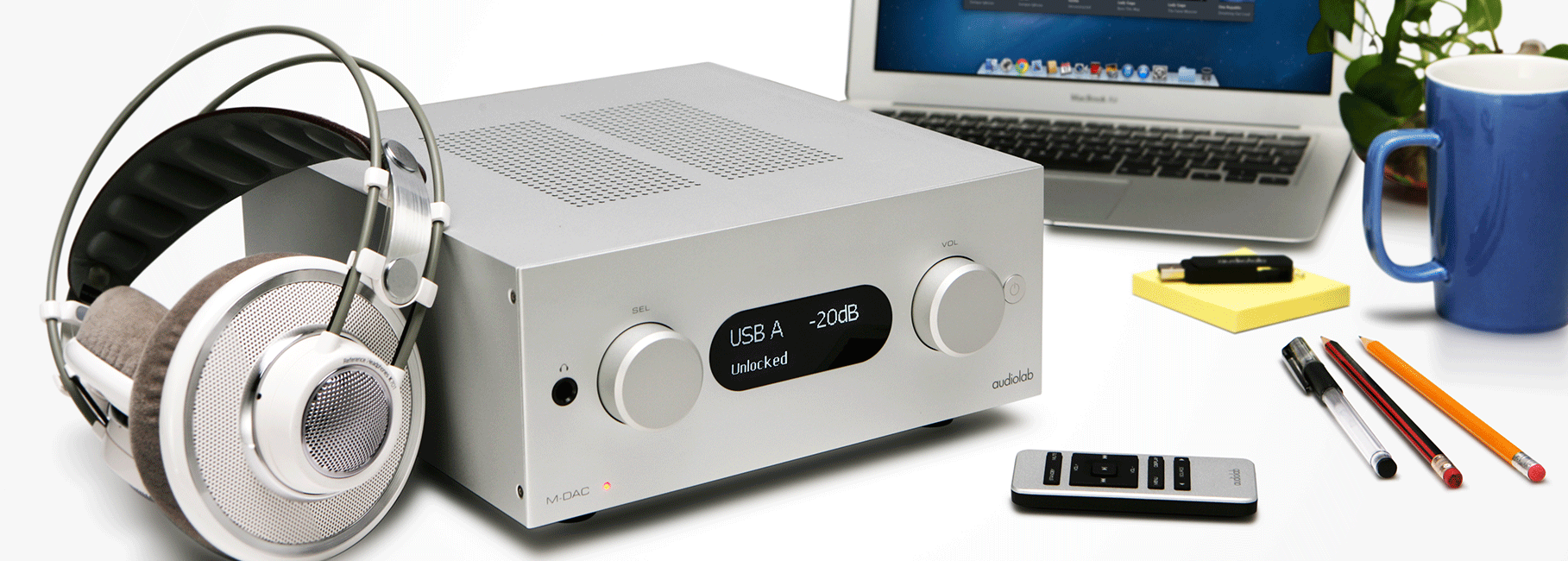
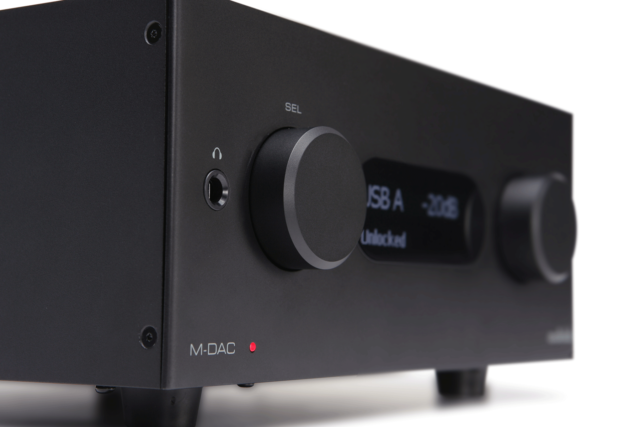

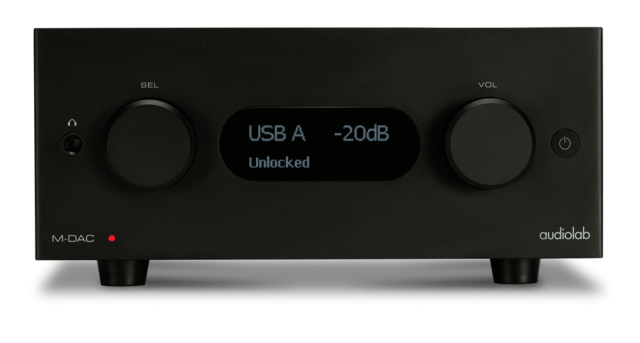
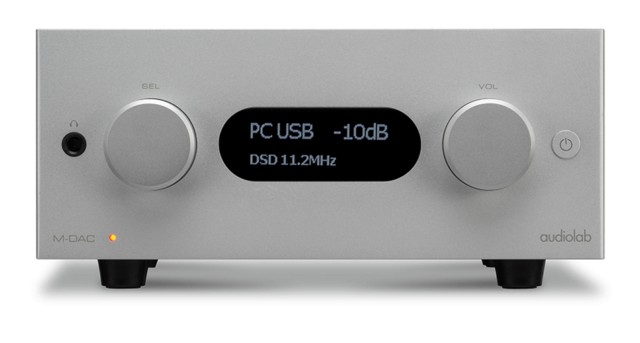
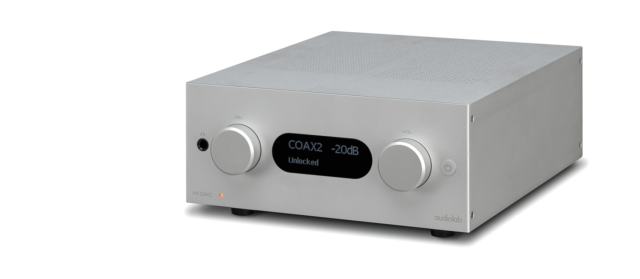
Looks like an interesting “piece of kit.” I read somewhere on the web that a Raspberry Pi with a decent digital-out HAT card and a USB HDD can make a decent server/streamer for not big money. Might be an ideal companion for the M-DAC. 😉
Cheers, Steve
Is it an advantage to use a dac rotel on a Yamaha ex z9 receiver?
Hi Steve,
I was thinking about that too. Seems like the Rasp Pi with a Hat with coax out plus the Audiolab MDAC+ would be an ideal streamer. Economical too.
Cheers,
David Neice
Hi Carlos,
A very good DAC will improve the sound of almost any system. For instance, when I first hooked up the Audiolab MDAC+ it was into my secondary system which uses an Advent receiver. The improvement in sound was immediately noticeable.
Cheers,
David Neice
Hi David,
What a very interesting and erudite article. I am coming to this review quite late, as I have only recently managed to put together a high quality system worthy of the amp at its centre. A Unison Research Unico hybrid (1st incarnation), with Quad Z3 speakers, and a Quad Artera Play+ CD player, with built in Headphones Amp and a host of inputs/outputs I shall never use ! The sound through the new Quad Z3 speakers is very special indeed, but the sound via the built in Phones Amp to my Sennheiser HD650 headphones leaves something to be desired.
Hence my interest in the Audiolab MDAC+ My question is, will this DAC surpass the quality of the Quads DAC, and will it be a significant upgrade from the Quads Headphone Amp ? Or would an upgrade of headphones make more sense ?
Hope this reaches you ok
Kind Regards, Peter Whitfield.